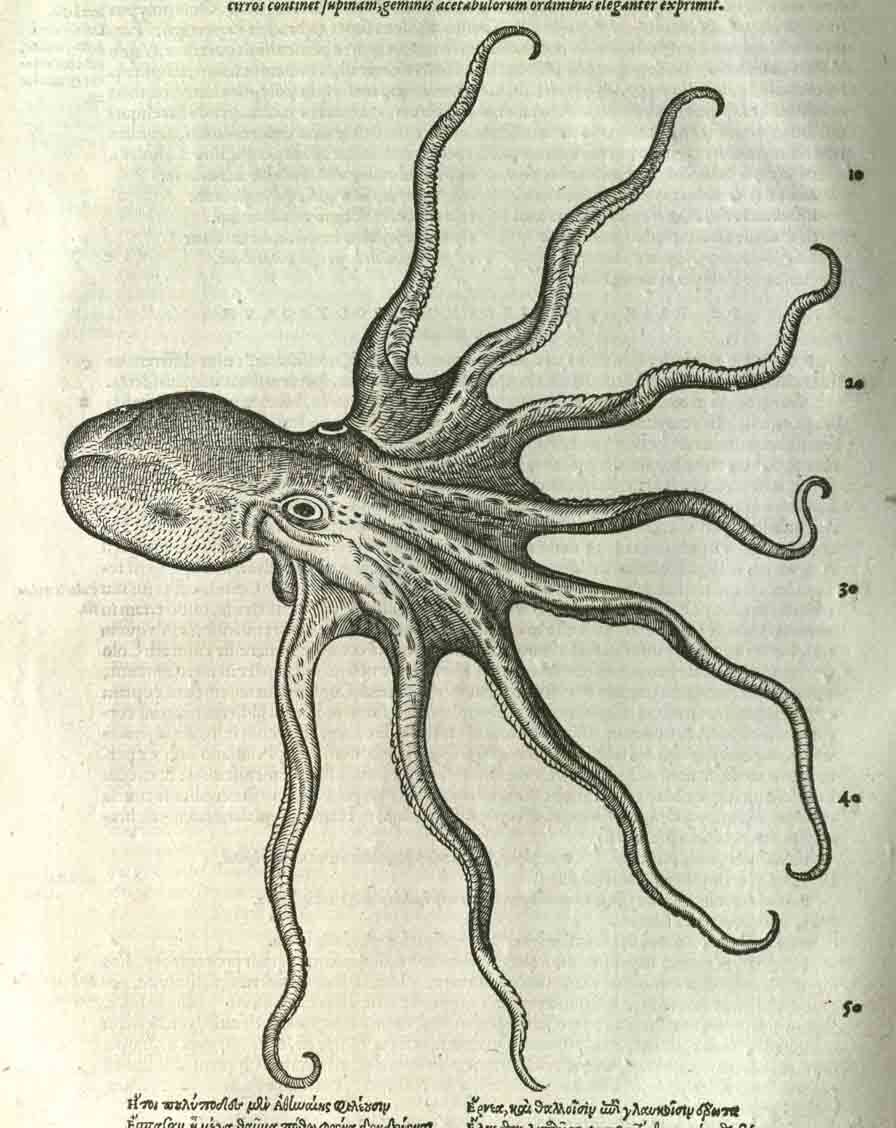 |
| Gessner’s Octopus |
Have you ever wanted to browse the stacks of a rare book library? To explore the pages of Gessner’s sixteenth century masterpiece Historiae Animalium and ask an expert why a walrus is illustrated with wing-like appendages? Or study Alexander Wilson’s passenger pigeon illustration and learn from a rare book authority the scientific implications of the depictions of now-extinct species?
Of course, you can examine the digital surrogates of many incredible rare books on BHL, but where can you go to get expert knowledge of the importance of these titles, or even understand what these authors of long-ago wrote in the first place if you can’t read Latin?
The American Museum of Natural History can help you get answers to some of your burning rare book questions. A new book, Natural Histories: Extraordinary Rare Book Selections from the American Museum of Natural History, provides insight into a selection of spectacularly illustrated volumes from the AMNH’s rare book library. The work, edited by Tom Baione, the Harold Boeschenstein Director of Library Services at AMNH and BHL Institutional Council member, features 40 essays from museum curators, scientists, librarians, and other experts discussing each rare book’s unique qualities and scientific contributions. Furthermore, Natural Histories includes 40 “suitable-for-framing” prints selected from the illustrations found within the rare tomes discussed.
 |
| Cover of Natural Histories. Image: “Great Horned Owl” from Alexander Wilson’s American Ornithology. |
The books highlighted in Natural Histories span from the 16th century to the early 20thcentury and include such critical works as Gessner’s Historiae Animalium, Robert Hooke’s Micrographia, Alexander Wilson’s American Ornithology, Ernst Haeckel’s Kunstformen der Natur, and John James Audubon’s The viviparous quadrupeds of North America. According to Baione,
Natural Histories came about because we wanted to let people know about our rich rare book collection, which contains more than 14,000 volumes and is used by researchers from around the world and includes many unique and hard-to-find volumes.
 |
| Microscopic view of snow and frozen water. Micrographia. |
Natural Historiesfocuses in particular on the importance of the scientific illustrations found within each rare book discussed. As Baione articulates,
In the days before photography and printing, original art was the only way to capture the likeness of organisms, people, and places, and therefore was the only way to share this information with others. Printed reproductions of natural history art enabled many who’d never seen an elephant, for instance, to try to begin to understand what an elephant looked like and how its unusual features might function…I hope this collection of essays and plates will give readers a better understanding of the science behind these works and an appreciation of the art illuminating their pages.





Leave a Comment